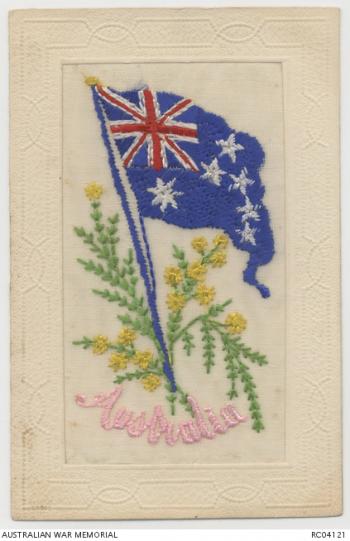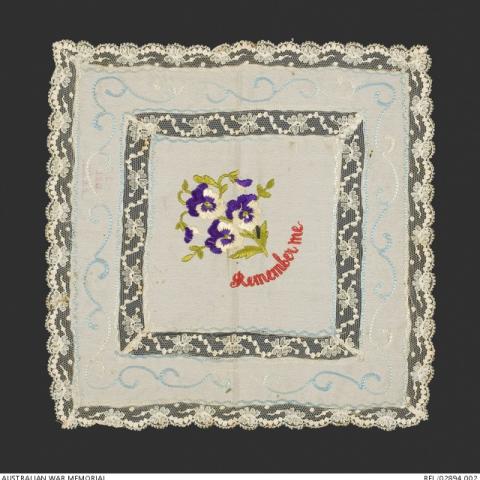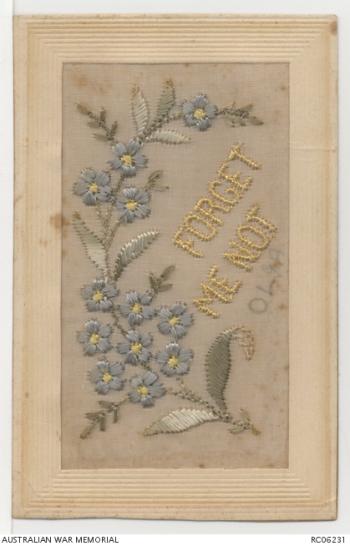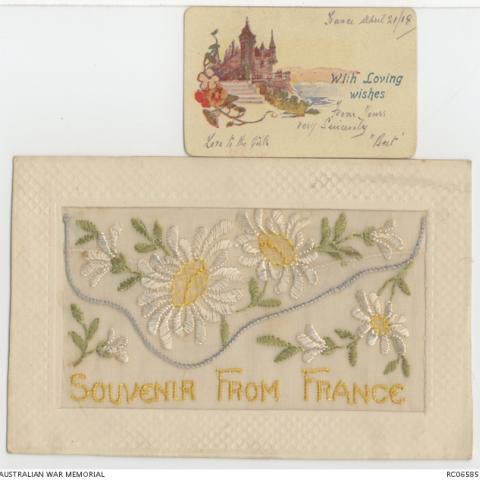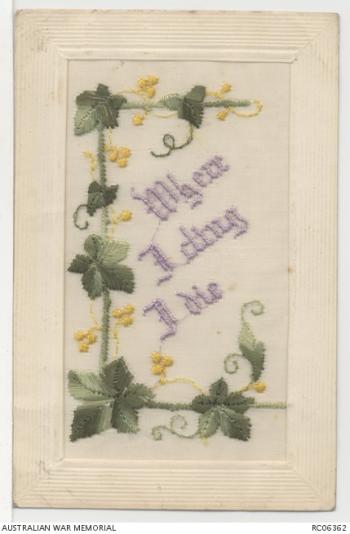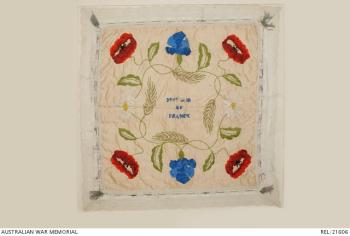Saying it with Flowers
“Say it with flowers” is a well known advertising slogan but these days the language of flowers is not as well known as it was almost 100 years ago. During the First World War Australians serving overseas, many away from their families for years, sent floral tributes to their loved ones in the form of embroidered postcards, handkerchiefs, cushion covers and other souvenir items.
While flowers were selected for their beauty, some also had special meanings of a personal nature that were well known from the Victorian period. These could help express the feelings of those separated for long periods, without always needing to use words.
The most popular design appears to have been the pansy, which means loving thoughts. Roses were also popular, often in pink thread (friendship) or sometimes in red (passionate love). The pretty little blue forget-me- not was an obvious choice to send to those at home.
Some other flowers and their meanings are listed below.
Violets –faithfulness
Daisies - gentleness, innocence, loyal love
Iris - inspiration
Ivy - fidelity
Poppy - imagination, dreaminess or eternal sleep. Depending on the context, they could also just represent the fields of France.
Patriotic sentiments were also displayed through flowers. Either through national emblems, such as Australian wattle, Scottish thistles or Irish clover or through bunches of flowers coloured red, white and blue. This can be seen in the item below which, in addition to the colours of the flowers has added meaning through representing flowers (and plants) of the French fields with the poppies, cornflowers, daisies and wheat.
Finally, for special occasions, such as Christmas, holly (foresight) and mistletoe (love and affection) were popular flowers.
